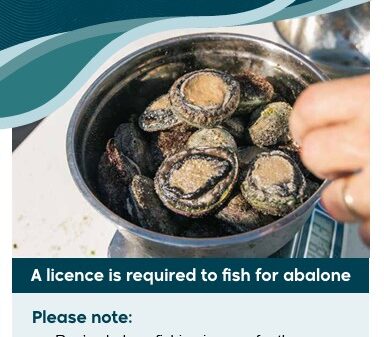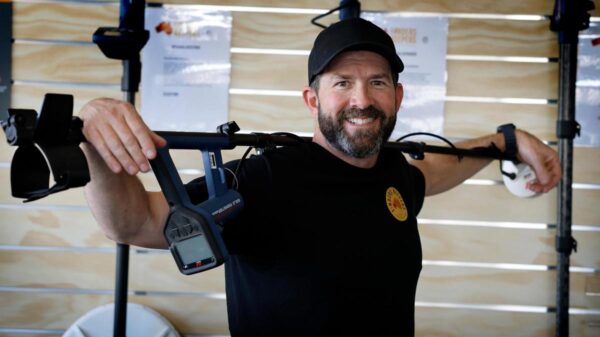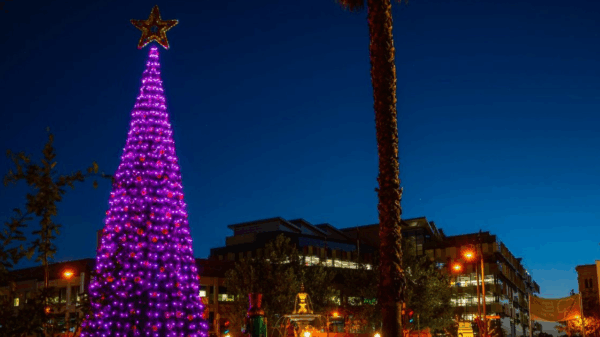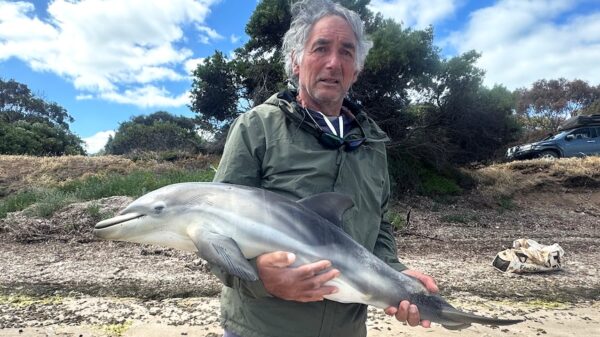The ongoing research into banana diseases, particularly Fusarium Tropical Race 4 (TR4), has become crucial for global banana production. As the Cavendish variety dominates the market, its vulnerability to TR4 has raised alarms among growers worldwide. This strain, which emerged as a significant threat in the 1990s, has now been detected in various regions, including the Philippines and Australia, prompting urgent action to safeguard the industry.
Historically, the shift from the Gros Michel banana to the Cavendish variety occurred due to the devastating impact of Panama disease caused by the Fusarium oxysporum fungus. The Cavendish variety, which now accounts for approximately 20 million tonnes of annual production, has become a staple across more than 20 countries. However, the emergence of TR4 has put this production at risk, threatening the livelihoods of countless farmers.
The first identification of TR4 occurred in the Indo-Malay region during the 1990s. Although early findings showed limited presence in smaller banana-exporting countries, the discovery of TR4 in the Philippines—home to a significant portion of the global banana export market—spurred renewed research efforts. The situation became dire when, in 2019, TR4 was reported in South America, jeopardizing the supply of bananas to Europe.
Researchers at the ACIAR have been pivotal in addressing this challenge. Dr. Tony Pattison, a Senior-Principal Nematologist with the Queensland Department of Primary Industries, has led various ACIAR-supported projects focused on TR4. He noted that TR4 may have co-evolved with wild banana species in the Indo-Malay rainforests, remaining unchecked until Cavendish plantations became widespread. The monoculture nature of Cavendish allowed Fusarium to thrive, leading to a global crisis as infected planting materials spread across the world.
The TR4 fungus infiltrates the banana plant’s root system, blocking nutrient and water transport, ultimately resulting in the plant’s death. The presence of chlamydospores allows TR4 to persist in the soil for decades, posing a long-term threat to banana cultivation. With around 1,000 varieties of bananas globally, the Cavendish variety’s dominance makes it particularly vulnerable to TR4’s devastating effects.
Initial research efforts in Indonesia from 2004 to 2008 revealed that some local farmers were effectively managing TR4’s spread. Dr. Pattison emphasized the importance of understanding these successful practices, which included using clean planting materials and maintaining diverse cropping systems. This research led to the development of management tools and extension programs tailored to Indonesian growers.
In 2005, Fusarium wilt was reported in the Philippines, mirroring the challenges faced in Indonesia. ACIAR’s subsequent research aimed to adapt successful strategies from Indonesia to the Philippines’ large-scale Cavendish plantations. Many of these plantations rely heavily on smallholder growers, whose contractual arrangements often restrict their ability to implement necessary farming changes.
To facilitate the adoption of effective disease management practices, Australian and Filipino researchers collaborated to establish demonstration farms. These sites provided evidence that Fusarium wilt could be controlled, enabling adaptable growers to thrive within the critical banana export sector.
Australia’s TR4 situation began in 1997 when the fungus was first detected in Darwin, leading to the near-total collapse of banana production in the Northern Territory. However, proactive biosecurity measures have allowed the disease to remain contained for nearly two decades. In 2015, the fungus re-emerged in Far North Queensland, prompting growers to implement stringent biosecurity protocols based on earlier research.
Leanne Erakovic, CEO of the Australian Banana Growers’ Council (ABGC), highlighted the potential devastation TR4 poses to Australia’s $700 million banana industry. She noted that strong grower commitment and government backing have been essential in keeping TR4 largely confined to a limited number of farms. The ongoing Grower Support (Biosecurity) program, established by the Queensland Government, emphasizes biosecurity awareness and research into resistant varieties.
Research into the ecological factors influencing Fusarium wilt is currently underway, focusing on soil health and its relationship with disease prevalence. Dr. Paul Dennis, an Associate Professor at the University of Queensland, pointed out that understanding the dynamics of soil microorganisms could lead to improved disease control methods. His team is analyzing soil samples to identify how various management practices may enhance beneficial microbial communities that suppress Fusarium.
A notable evaluation of ACIAR’s TR4 research efforts revealed that for every $1 invested, Australian growers saw returns of approximately $70. This research has proven invaluable for informing rapid detection and containment strategies, particularly in Australia. As the disease threatens the livelihoods of up to 300,000 smallholder farming families in the Philippines, the ongoing work aims to build local research capacities and sustainable management practices.
The necessity for international collaboration has never been clearer, with ACIAR extending its TR4-related projects to countries such as Laos, Mozambique, South Africa, and Tanzania. Emerging threats from Fusarium necessitate a unified approach to research and management, ensuring the future viability of banana production worldwide.



























































